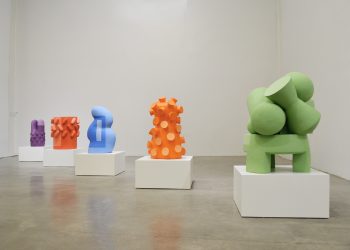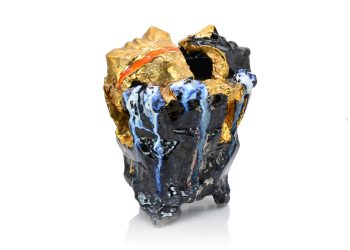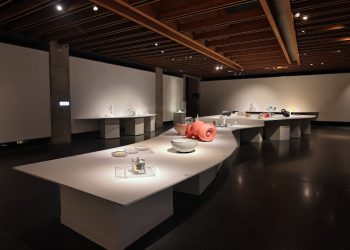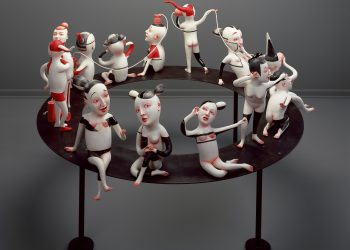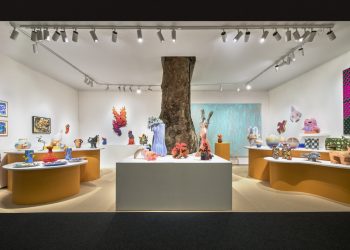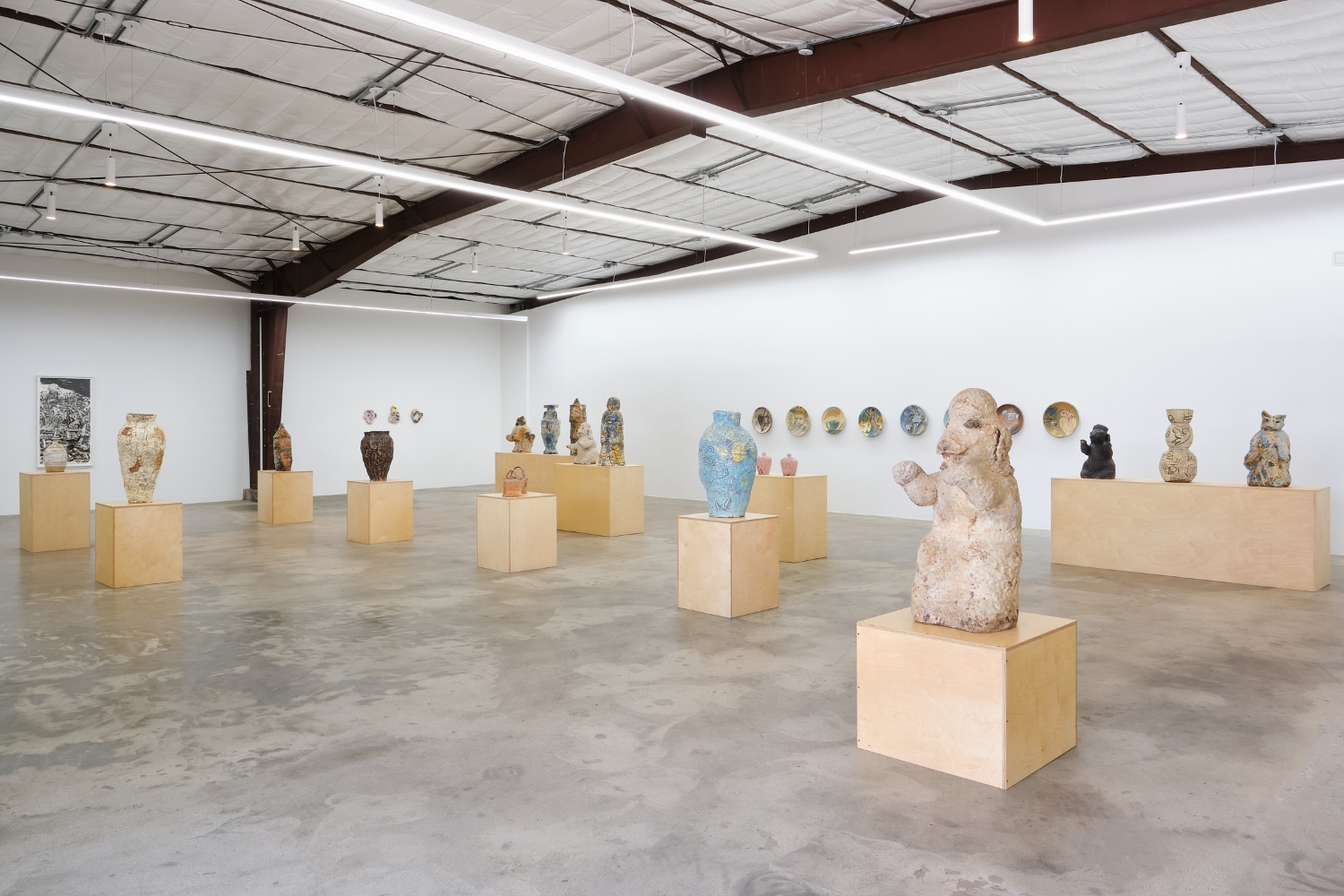
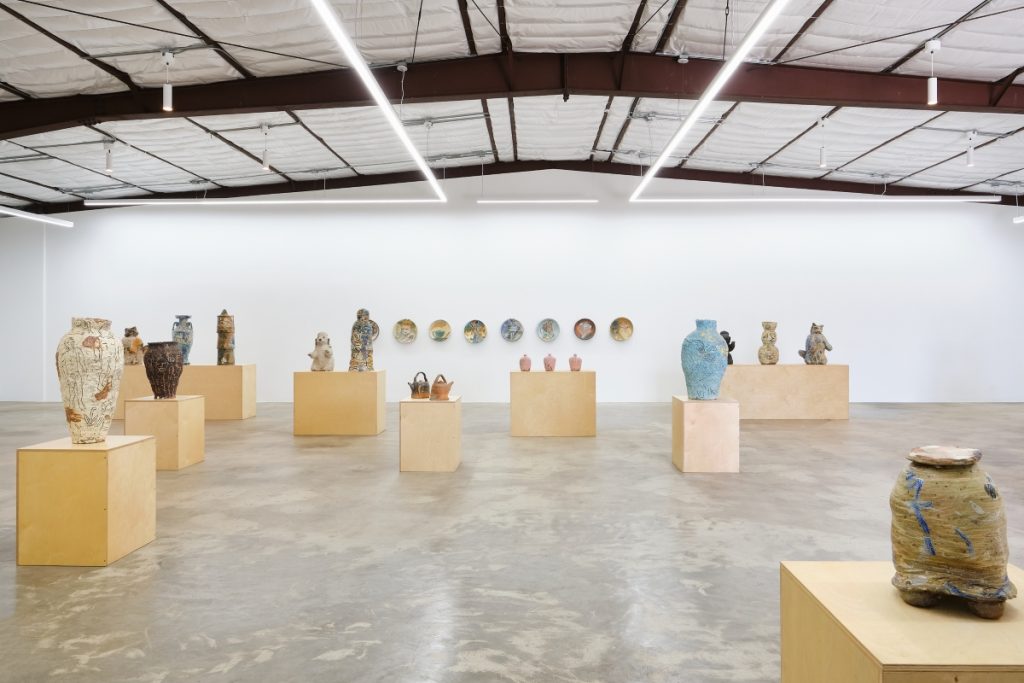
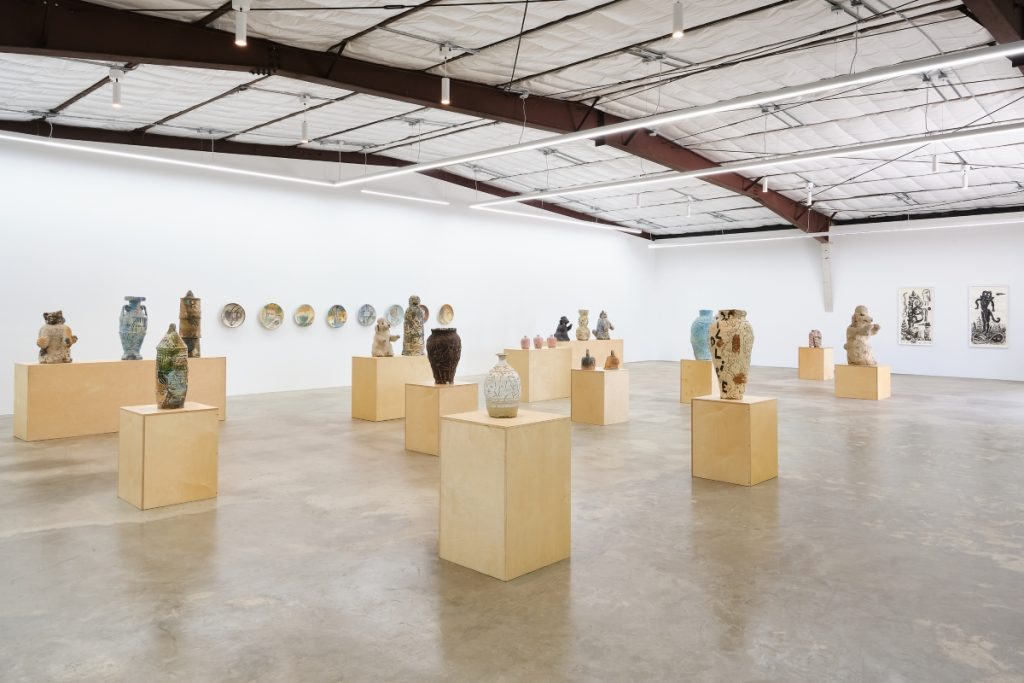
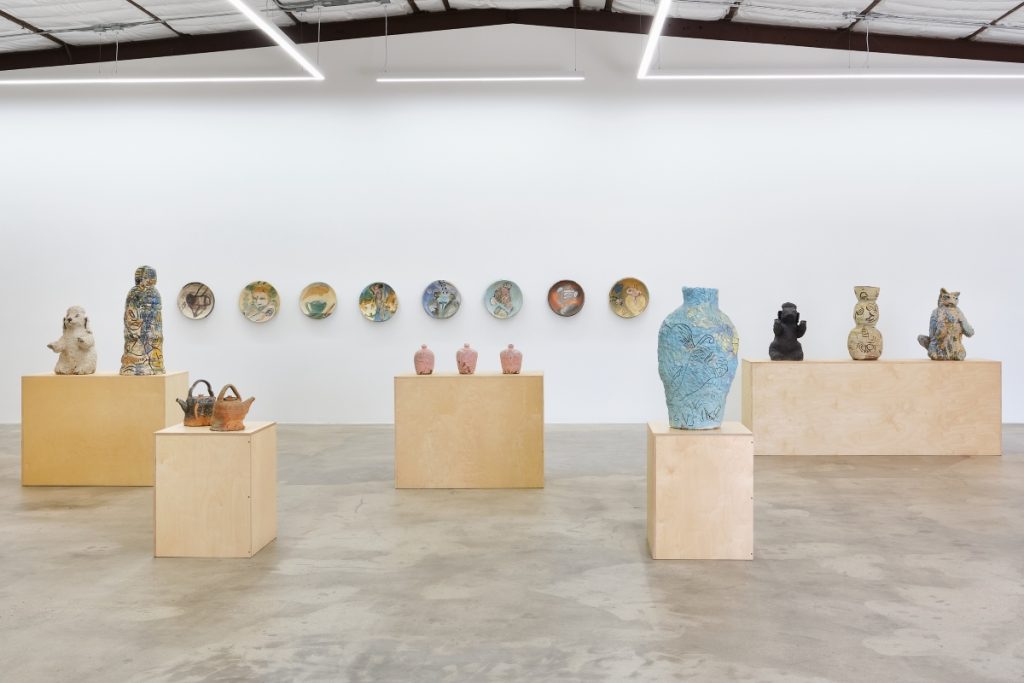
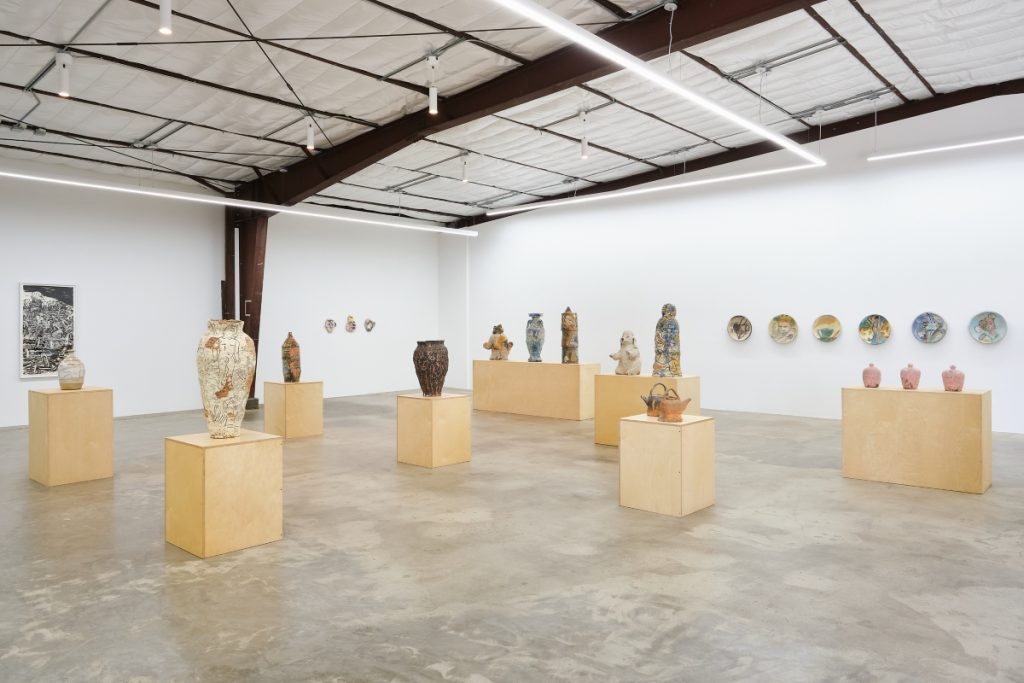
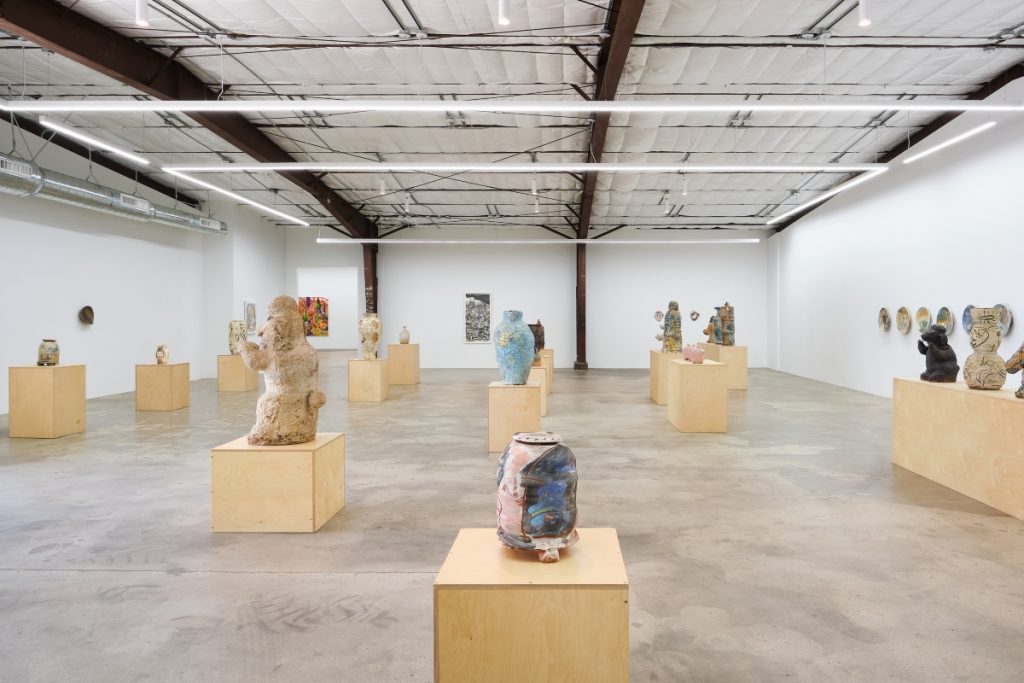
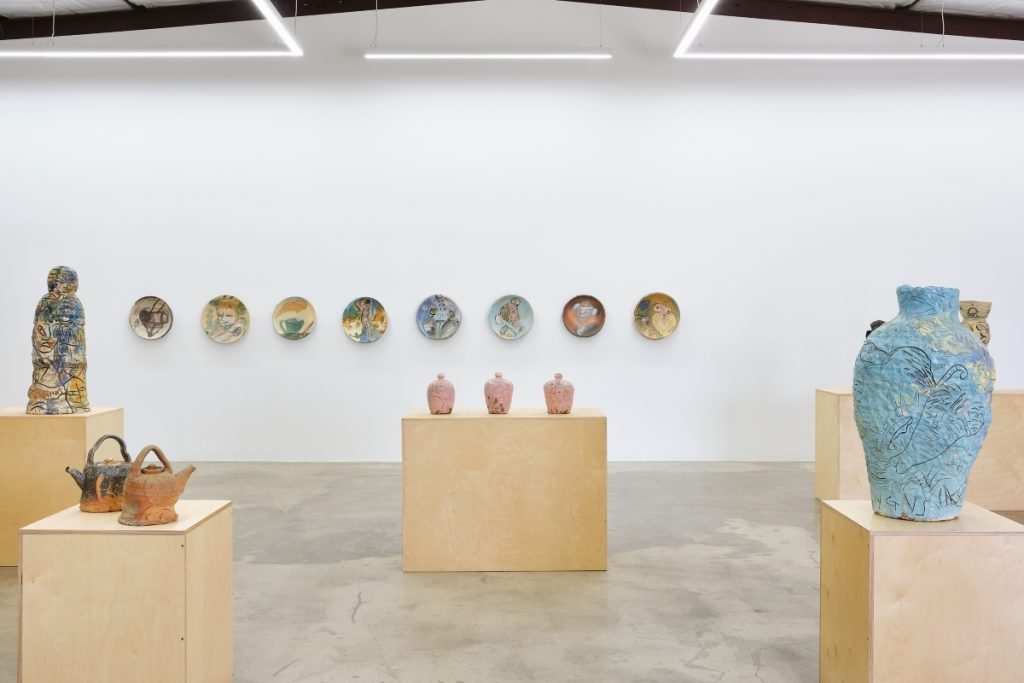
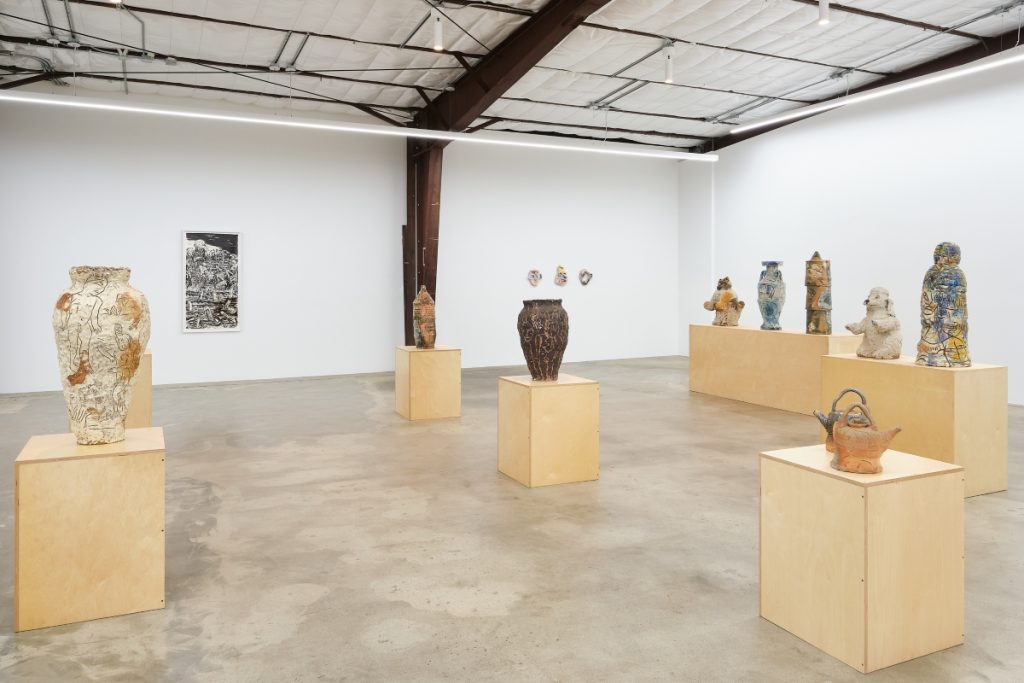
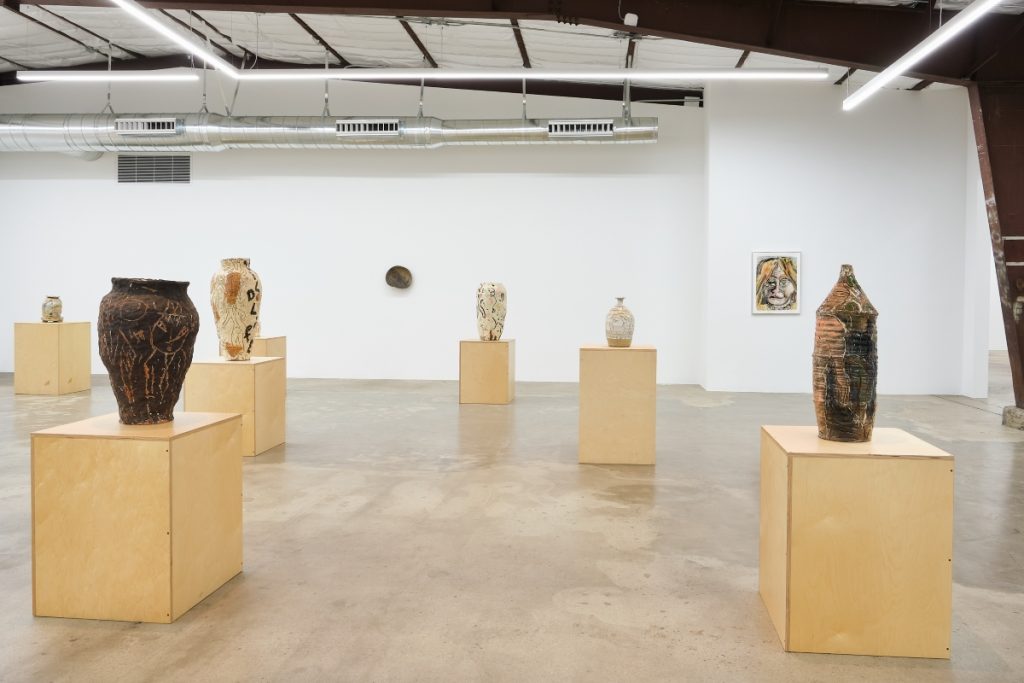
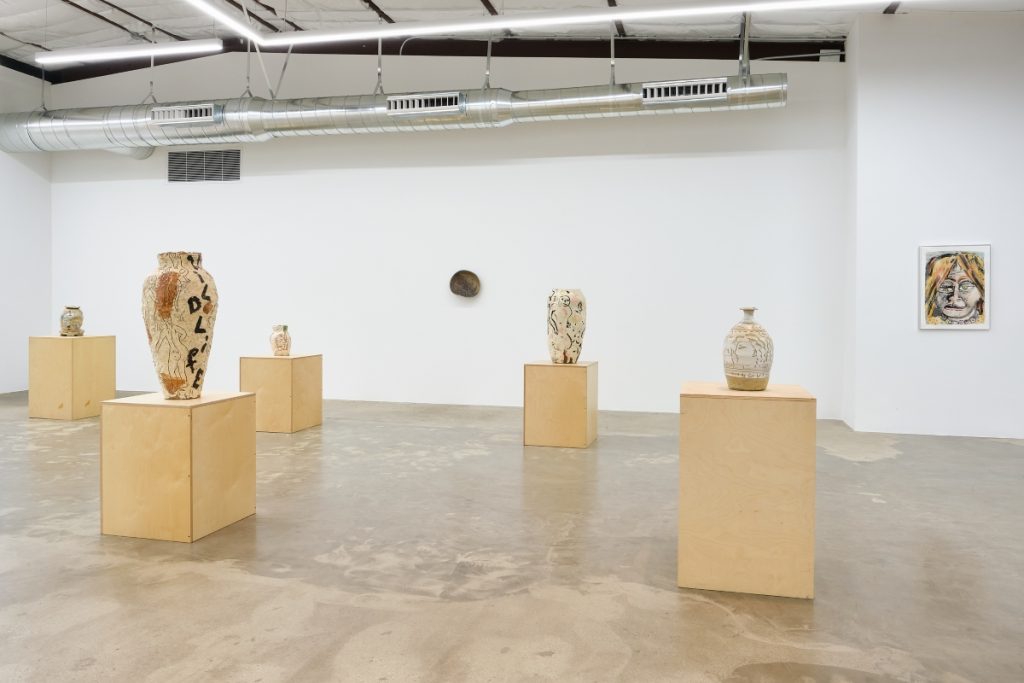
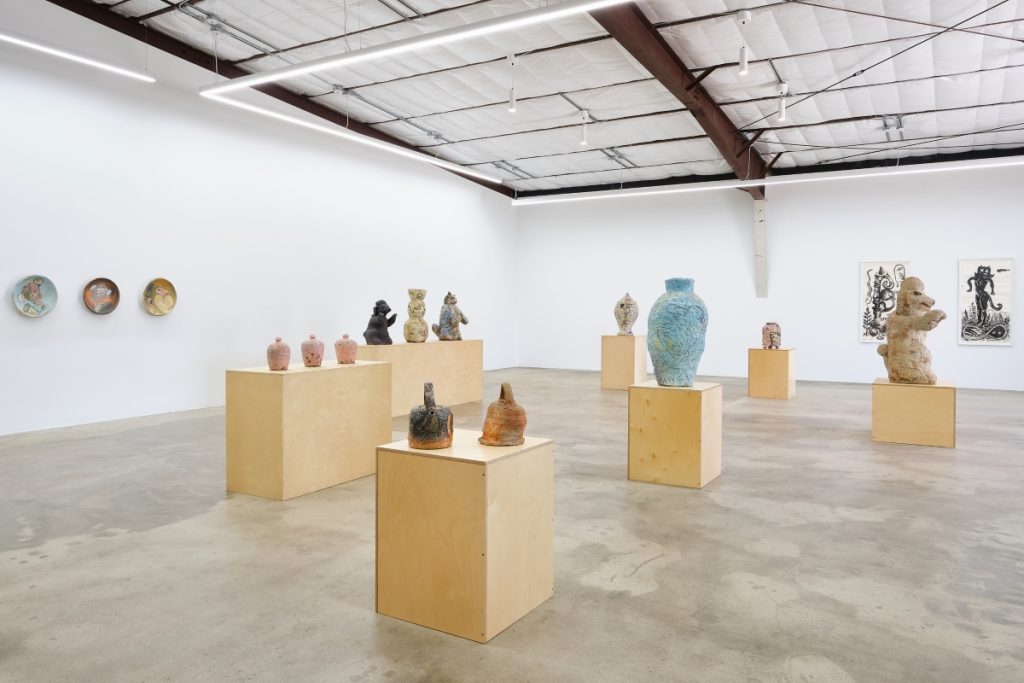
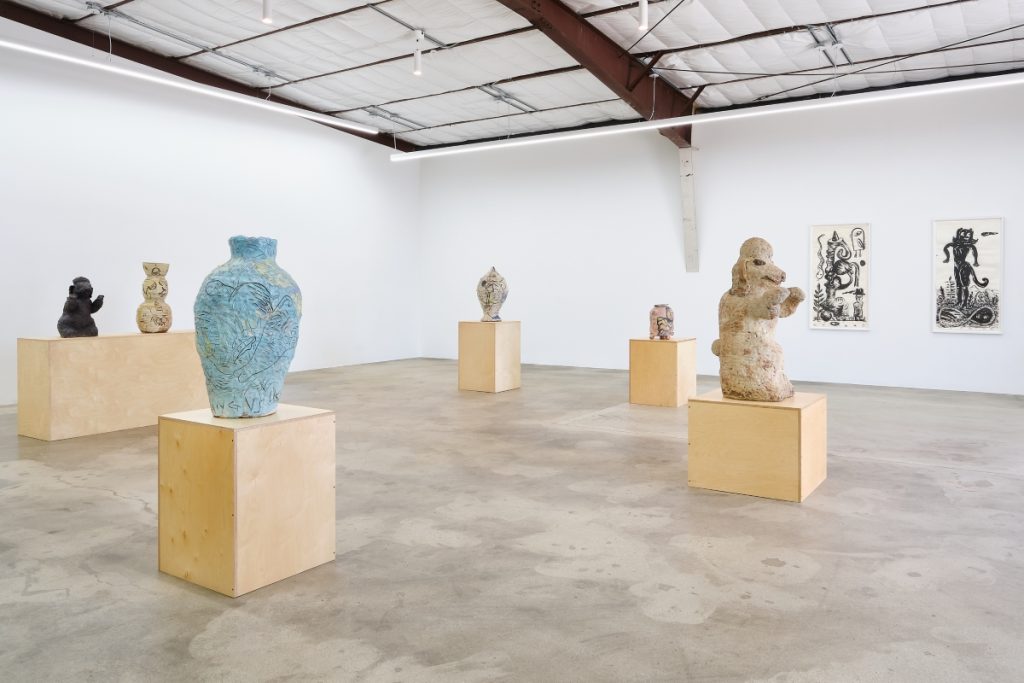
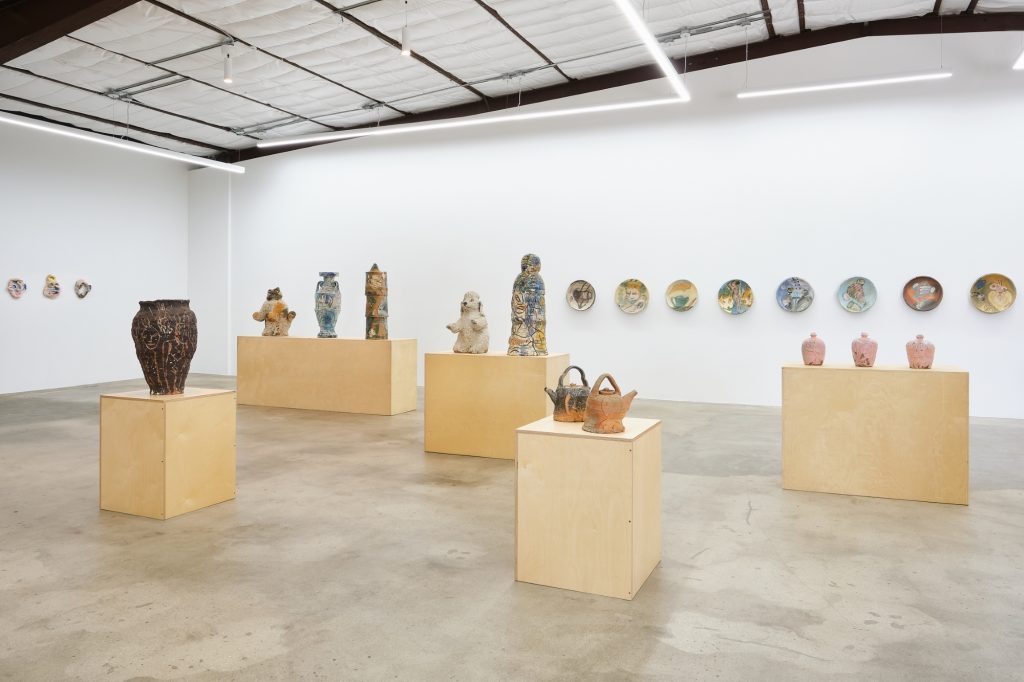
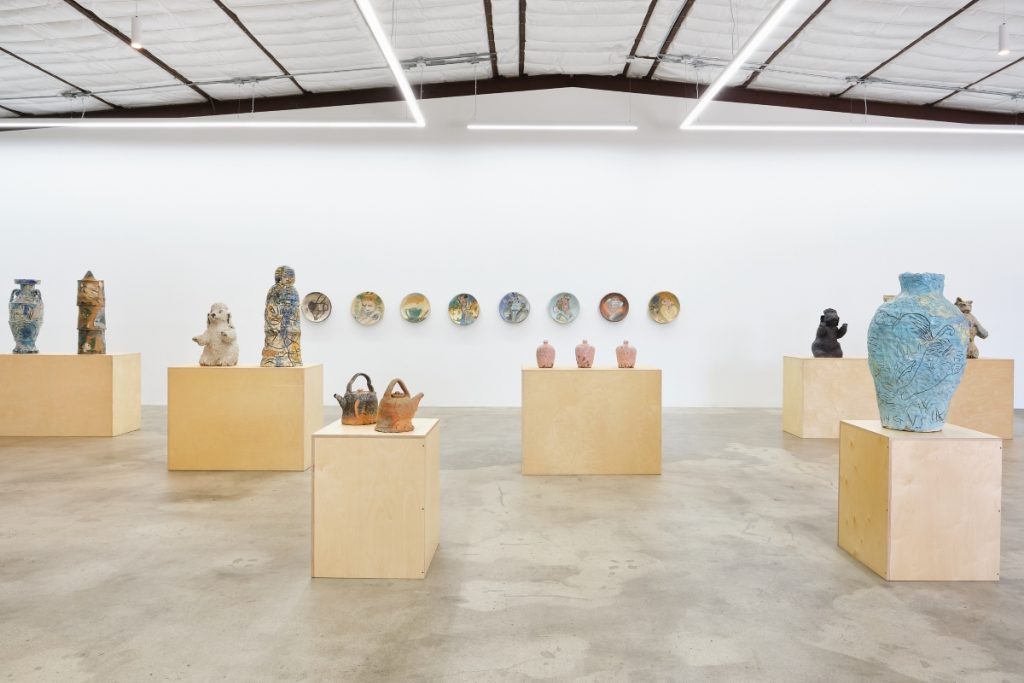
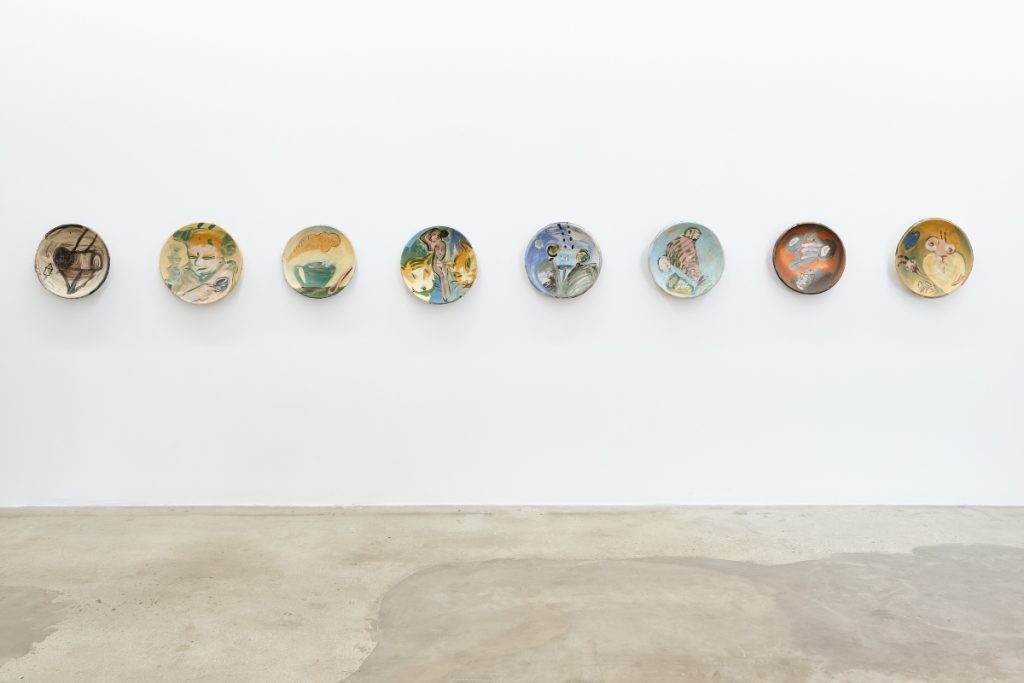
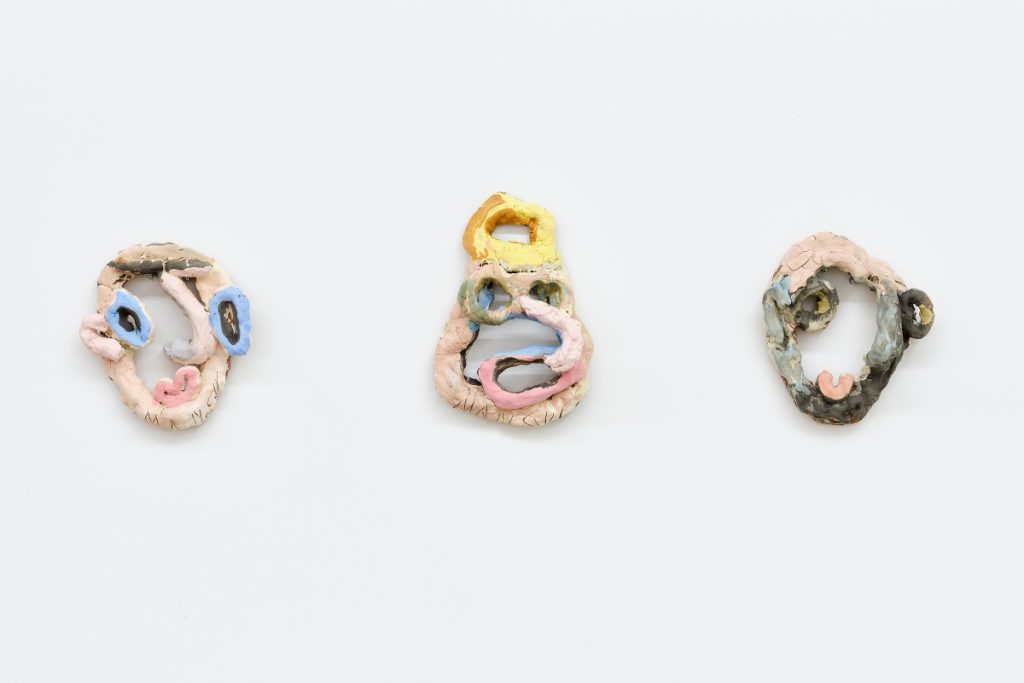
Wild Life: The Art of Kirk Mangus is on view at The Pit, Los Angeles
September 24 – October 31, 2024
In collaboration with Lefebvre Et Fils Gallery, Paris
The Pit is delighted to announce the posthumous solo exhibition of master ceramicist Kirk Mangus (1952 – 2013), Wild Life: The Art of Kirk Mangus. The exhibition highlights Mangus’ artwork throughout his career. This exhibition is made in partnership with Lefebvre et Fils Gallery, Paris.
Kirk Mangus was encouraged at a young age by his art teacher parents Chick and Nizza Mangus to study all aspects of art. He started taking workshops at Penland School of Craft in NC in high school along with his parents. He studied at Rhode Island School of Design 1971-1975 planning to be a sculptor but ending up major ing in ceramics with minor in drawing. His most influential teacher there was Jun Kaneko who demonstrated how to be an artist by being in the studio every day and posing questions for yourself.
A National Endowment For the Arts Fellowship in 1982 at age thirty enabled him to develop his wood-firing and his expressive impasto slip paintings on his work seen in many of the pieces in this show. Kirk was hired to head the ceramics department at Kent State University in 1985 till his sudden passing from a brain aneurysm in 2013.
He profoundly influenced countless students and artists who crossed his path over the years through his teaching and lectures, but arguably one of the most im portant things he did during his tenure there was to orchestrate Blossom Summer workshops at Kent. Along with his wife Eva he brought in world renowned artists who offered students a window into other ways of making.
In a lifetime of art that started at a young age, he went on to create drawings, paintings, murals, and both functional and sculptural ceramic works all over the world. He exhibited, lectured and taught hundreds of workshops from France, Finland, Korea, Italy, Canada, Mexico, Lithuania, China, Japan and throughout the US.
Play the game of imagining yourself the size of a Lilliputian, about six or eight inches tall, and then walk around on the surface of one of Kirk Mangus’ pots. There you meet poodles, dancing girls, warriors, bugs with houses, cats, or you could fall into the sea. You have entered a wondrous diorama. You have stumbled into Kirk’s world.
Kirk Mangus’ work poured from his soul, his brain, his hands. He could carry on an intellectual conversation, crack jokes, and draw loose collisions of Olmec gods and Greek tragedies–seemingly without pausing to come up for air or even glancing at the page. If you walked into his field of vision you risked showing up later in his art. You might not immediately recognize yourself but he drew, carved and painted what he saw from memory or even a dream state. Kirk created likeness es of those close to him, of students, even of people he observed at the grocery store. Nothing and no one was off limits. He grabbed any medium at hand: the ever-present Sharpie, a pencil, or even a stick to carve a pot. He constructed ceramic sculptures utilizing his own combination of pottery and sculptural techniques. Watching him throw at the potters’ wheel mesmerized anyone present within moments.
Cat Girl in Paradise (1987), an ink brush painting on Korean mulberry paper, provides one example of such free use of available media. He first began using the handmade paper during a residency in South Korea 1987 simply because it was there. The subject matter, Cat Girl herself, populated his work over the years. She morphed from a delicate early drawing of his wife Eva (complete with wagging cat tail !) into a sort of every-woman superhuman character whom he alternately depicted as bulletproof, comical, yet still vulnerable–note the creature hiding beneath her feet in this image.
He had a magic that made you feel seen. He had no artifice about him. With Kirk, everything was beautifully open, his humanity on full display in the smallest artwork he made and in the briefest of conversations. Kirk Mangus loved people. We loved him back. His impact on the field can be seen in much of the new work being done today.
Text by Megan Tuttle
Contact
info@the-pit.la
The Pit Los Angeles
3015 Dolores St
Los Angeles 90065
United States
Photography by Chris Hanke. Courtesy of the Artist and The Pit and Lefebvre et Fils Gallery. All copyright belongs to Eva Kwong and the Estate of Kirk Mangus.




